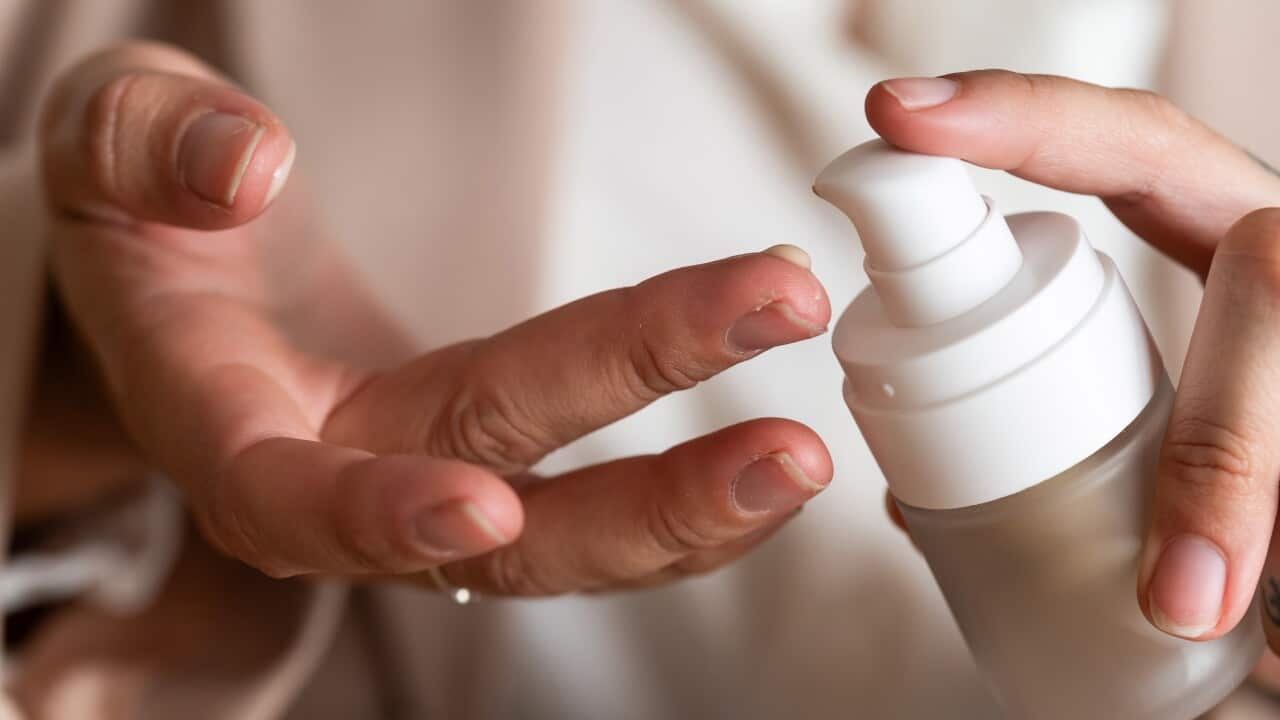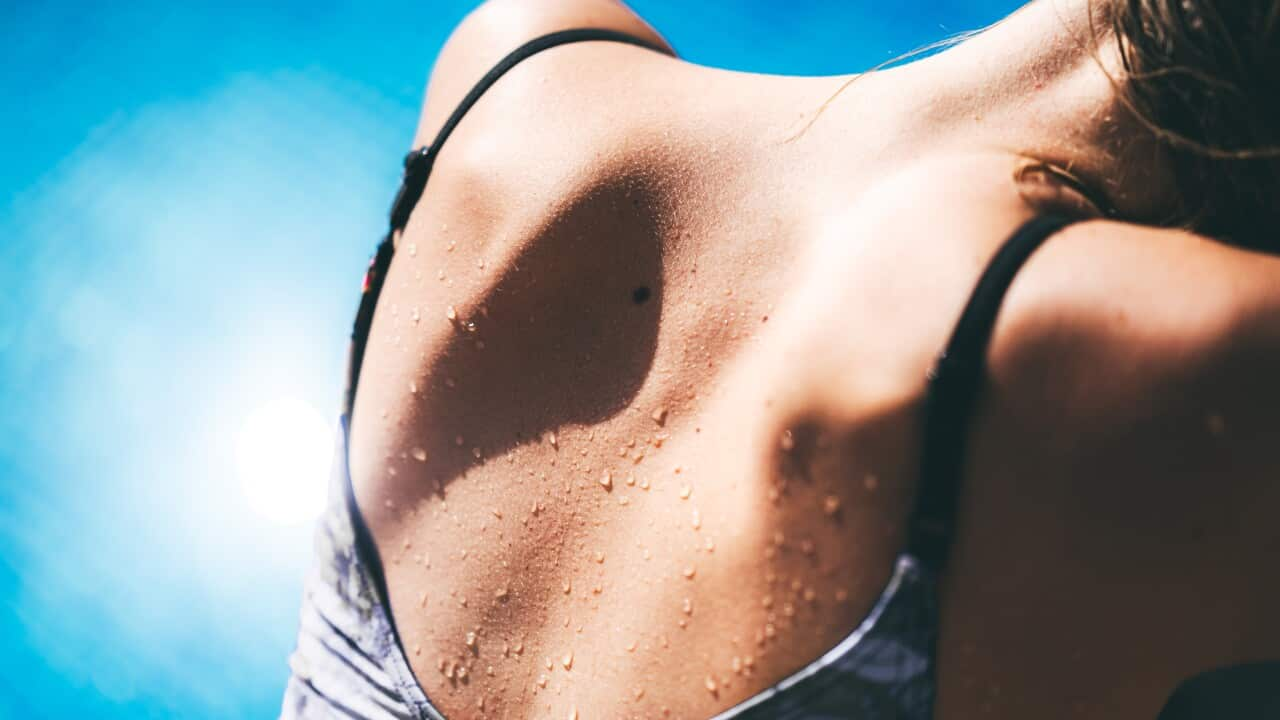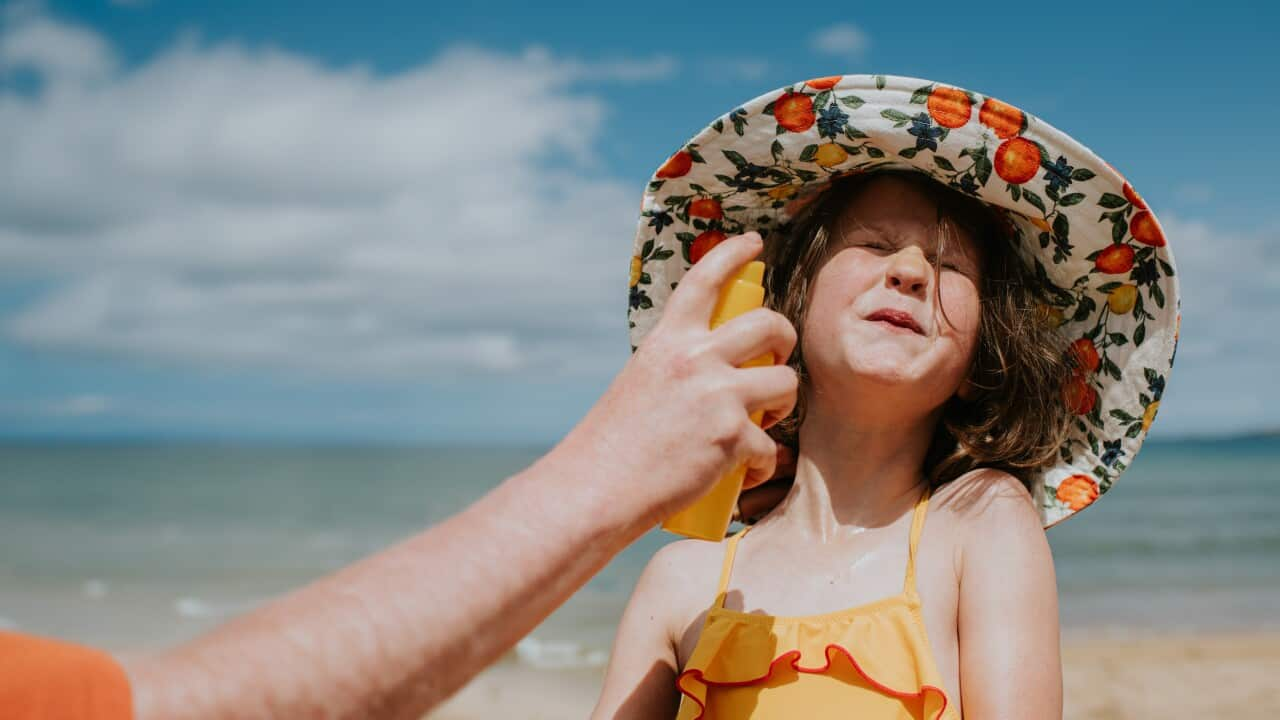Commercial solariums were banned in Australia a decade ago — but there's a new device causing concern.
They are 'collariums', and experts say they're being promoted as a healthy alternative to sunbeds despite emitting ultraviolet (UV) radiation.
Exposure to the artificial sources of in sunbeds causes skin cancer, eye damage and premature skin ageing.
Prior to the ban, research estimated that 281 new melanoma cases, 43 melanoma-related deaths and 2,572 new cases of squamous cell carcinoma were attributable to solarium use in Australia every year.
What are collariums and are they any different to solariums?
Emitting UV and red light, operators of collariums claim they provide a longer-lasting tan and stimulate collagen production, which is where the name originates from.
While Australian sellers of collariums claim they're safe, cancer epidemiologist Professor Anne Cust told SBS people shouldn't be fooled.
"These are essentially a rebranded solarium," she said.
Cust is concerned about the UV radiation emitted by collariums, particularly a type of radiation known as UVA.
"They're a device that you lie in and it emits UV radiation, predominantly UVA radiation, which we know does penetrate the skin and causes damage that actually breaks down collagen and causes skin ageing," she said.
"These devices are often marketed as being healthy, and we know that devices that are emitting UV radiation for the purpose of tanning are not healthy."
Writing in the Conversation last year, Cust and Katie Lee from the Dermatology Research Centre at the University of Queensland wrote that UVA "penetrates deeper into the skin than UVB", another type of UV radiation.
UVA exposure is dangerous because it increases the risk of skin cancer.
Cust and Lee said that while UVB "promotes cancer-causing mutations by discharging energy straight into the DNA strand", UVA "sets off damage" by creating unstable compounds that react easily with cells and molecules, damaging cell membranes, protein structures and DNA.
The researchers also said that "all types of sunbeds increase the risk of melanoma, including those that use only UVA."
Skin cancer is the most common cancer in Australia, with two thirds of Australians diagnosed with a skin cancer in their lifetime.
While some manufacturers claim the machine's light spectrum increases "UV compatability", Cust said it's not clear what this means and adding red or pink lights won't negate harmful effects of UV.
What happens when you use a collarium?
Sessions in a collarium usually span for just 10 to 20 minutes.
In that period of time, users quickly develop a tan.
Cust said tans are caused by a response in the body to UV radiation producing a substance to darken the skin.
"It's essentially your body's way of saying 'I'm in trauma, I'm distressed'. It's your body's way of trying to protect itself from the UV radiation damaging the DNA in your cells," she said.
Collariums in Australia
Collarium operators have been found in Queensland, NSW and Victoria, according to media reports, with sessions starting at $25. Not all all of them advertise the service explicitly, but will take bookings over the phone.
The Guardian reported in November that Queensland had received 89 reports of solariums and pink light systems used since 2022. No prosecutions had been made, with a Queensland Health spokesperson saying the department was purchasing UV detection equipment that would help with investigations into facilities allegedly using them.
An in NSW, the state's Environmental Protection Authority said it had received 32 reports in 2024, The Guardian reported.
Experts concerned about rise in tanning trends
Cust said she's concerned about the number of young people seeking to get a tan and social media trends that are glamourising tan lines and tanning.
"It's really concerning that people are putting themselves in harm's way by getting these intentional tan lines," she said.
"We know that intentionally getting exposed to UV radiation through lying in the sun is damaging to your health, increases the risk of skin cancer and also causes premature ageing as well, which I'm sure these young people don't want either."
An Australian Bureau of Statistics survey, funded by the Cancer Council and undertaken in late spring and summer 2023-24, found 9.4 per cent of people aged 15 years and over had attempted to suntan in the past 12 months.
"It's really important that young people understand the risks of intentionally tanning and spending time in our Australian summer sun, which is much stronger in Australia than the rest of the world," Cust said.
How to stay sun safe
The Cancer Council recommends five key sun protection behaviours, including wearing covering clothing, using sunscreen that's at least SPF30, wearing a broad-brimmed hat or cap with back flap, staying in the shade and wearing sunglasses.
These steps are otherwise known as the 'Slip, slop, slap, seek and slide'.
Cust recommended that Australians download the SunSmart app created by the Cancer Council Victoria, which shows the real time UV index for location.
"If you can check the UV index for the location you're at on those apps, you can look to see when you should be applying sun protection," she said.




